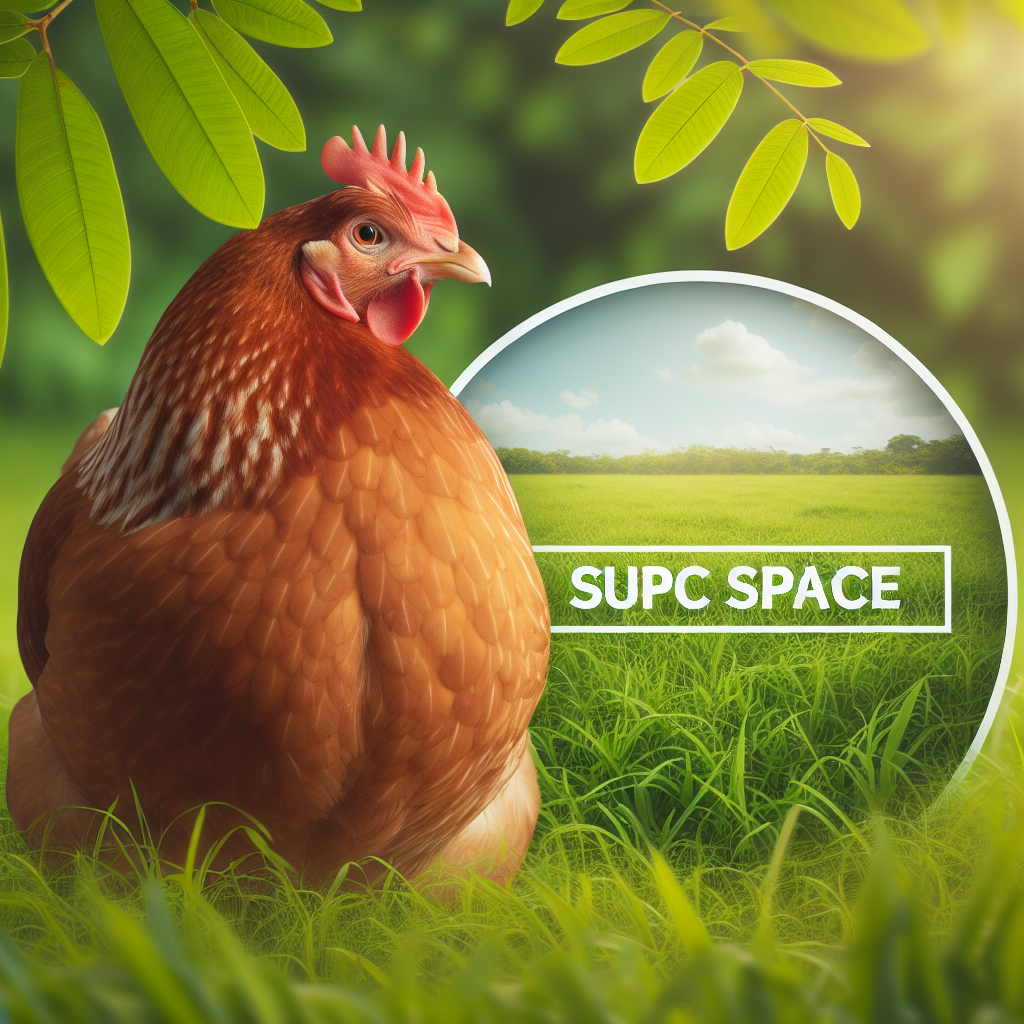Are you curious about the space requirements for broilers versus layers? This article explores the differences in space needed for these two types of poultry. Whether you are a poultry farmer or simply interested in learning more about the care of broilers and layers, understanding their individual space needs is vital for their well-being. So, let’s delve into this topic and discover the distinct requirements for these feathered friends.
Space Requirements for Broilers and Layers
When it comes to raising broilers and layers, providing adequate space for these birds is crucial for their well-being and productivity. In this article, we will explore the different housing systems available for broilers and layers, discuss their specific space requirements, delve into regulatory guidelines, and consider the economic and welfare implications. Additionally, we will look at the advancements in technology that are shaping the industry and discuss future directions in poultry farming.
1. Housing Systems
1.1 Conventional Systems
Conventional systems have long been the traditional approach to raising broilers and layers. In these systems, the birds are typically housed in indoor facilities or barns, where they have limited access to the outdoors. The housing is designed to provide protection from predators and extreme weather conditions. Conventional systems often involve the use of cages for layers and large floor spaces for broilers.
1.2 Alternative Systems
As consumer demand for more sustainable and welfare-friendly practices grows, alternative housing systems have gained popularity. These systems prioritize the well-being of the birds and provide them with more opportunities for natural behaviors. Alternative systems include free-range, organic, and aviary systems, which allow the birds to roam freely in defined areas and exhibit their natural instincts. These systems typically require larger spaces compared to conventional systems.
2. Broiler Space Requirements
2.1 Bird Density
To ensure the health and welfare of broilers, it is important to consider the appropriate bird density within the housing system. Overcrowding can lead to increased stress, disease transmission, and compromised growth rates. The recommended bird density varies depending on the type of housing system employed, with alternative systems generally allowing for lower bird densities compared to conventional systems.
2.2 Floor Space per Bird
Broilers require sufficient floor space to move around and exhibit natural behaviors, such as stretching and dust bathing. The recommended floor space per bird depends on various factors, including the bird’s weight, age, and the type of housing system. Generally, broilers housed in conventional systems require around 0.75 to 1 square foot of floor space per bird, while those in alternative systems may need up to 2 square feet.
2.3 Ventilation and Air Quality
Proper ventilation is crucial in broiler housing to maintain good air quality and reduce heat stress. Adequate airflow helps remove moisture, ammonia, and other gases, ensuring the birds have access to fresh air at all times. Mechanical ventilation systems, such as fans and air vents, are commonly used in broiler houses to regulate temperature and humidity levels.
2.4 Environmental Enrichment
To enhance the welfare of broilers, providing environmental enrichment is essential. Enrichment can include features such as perches, litter materials, and objects for pecking and scratching. These additions promote physical activity, mental stimulation, and natural behaviors in broilers, improving their overall welfare. The type and amount of environmental enrichment needed may vary based on the housing system and the specific requirements of the birds.
3. Layer Space Requirements
3.1 Bird Density
Similar to broilers, the bird density in layer housing plays a vital role in their welfare and productivity. Overcrowding can negatively impact egg production, increase the risk of disease, and reduce the birds’ ability to exhibit natural behaviors. The recommended bird density varies depending on the housing system, with alternative systems generally allowing for lower bird densities compared to conventional cage systems.
3.2 Cage Space per Bird
In conventional layer systems, cages are commonly used to house the birds. The amount of cage space allocated per bird is a critical factor in ensuring their well-being. The recommended cage space per bird ranges from around 67 to 86 square inches, depending on the regulatory guidelines of the specific region. However, it is worth noting that alternative housing systems, such as free-range or barn systems, provide the birds with more space to move and exhibit their natural behaviors.
3.3 Nesting and Roosting Area
Layers require dedicated space for nesting and roosting activities. Nesting areas should be designed to provide privacy and comfort for the birds, encouraging them to lay their eggs in a suitable location. Roosting spaces allow the birds to perch and rest, mimicking their natural behavior of seeking elevated positions. The provision of adequate nesting and roosting areas contributes to the overall welfare and productivity of layers.
3.4 Ventilation and Air Quality
Similar to broilers, layers require proper ventilation to maintain optimal air quality within their housing environment. Adequate ventilation helps remove excess moisture, ammonia, and other airborne pollutants, ensuring the birds have access to fresh air. Mechanical ventilation systems, such as fans and air vents, are crucial in regulating temperature, humidity, and air circulation in layer houses.
3.5 Environmental Enrichment
To promote the welfare and behavioral needs of layers, environmental enrichment is vital. Enrichment in layer housing can include perches, dust-bathing areas, and materials for pecking and foraging. These additions stimulate natural behaviors, reduce stress, and prevent injurious behaviors, such as feather pecking. The provision of appropriate environmental enrichment contributes to the overall well-being and productivity of the layers.
4. Regulatory Guidelines
4.1 Broiler Regulations
Regulatory guidelines play a crucial role in ensuring that broilers are provided with the necessary space and welfare considerations. These guidelines vary across different regions and are typically developed based on scientific research, industry standards, and animal welfare principles. Compliance with broiler regulations is essential for farmers to meet consumer expectations, maintain industry standards, and prioritize the welfare of the birds.
4.2 Layer Regulations
Similarly, regulatory guidelines exist for layer housing, particularly concerning the required cage space per bird. These guidelines aim to prevent overcrowding, promote animal welfare, and protect the integrity of egg production. Compliance with layer regulations ensures that the layers have sufficient space to move, exhibit natural behaviors, and lay eggs comfortably, contributing to their overall welfare.
5. Considerations for Space Requirements
When determining the space requirements for broilers and layers, several factors need to be considered. These factors include the type of housing system, bird density, age, weight, and welfare considerations. Farmers and poultry producers must carefully assess these factors to ensure the birds have adequate space to thrive, exhibit natural behaviors, and maintain optimal health.
6. Economic Impact
Space requirements for broilers and layers can have significant economic implications for poultry farmers. Efficient utilization of space, proper ventilation, and provision of environmental enrichment can lead to improved bird health, productivity, and overall profitability. Conversely, inadequate space and poor ventilation can result in increased disease risk, decreased growth rates, and higher mortality rates, negatively impacting the farmer’s bottom line.
7. Welfare Concerns
The welfare of broilers and layers is a paramount concern in the poultry industry. Providing adequate space allows the birds to engage in natural behaviors, experience improved health, and reduce stress levels. Overcrowding and limited space can lead to various welfare issues, including increased aggression, feather pecking, skeletal disorders, and compromised immune systems. By prioritizing the space requirements of broilers and layers, farmers can enhance animal welfare and promote a more sustainable and ethical approach to poultry farming.
8. Advances in Technology
8.1 Precision Farming
Advancements in technology have revolutionized the poultry industry, offering new possibilities to optimize space utilization and welfare. Precision farming techniques, such as sensor technologies and data analytics, enable farmers to monitor bird behavior, health, and environmental conditions in real-time. This information allows for more precise space management, improved ventilation control, and early disease detection, ultimately enhancing the well-being and productivity of broilers and layers.
8.2 Housing Design and Automation
Innovative housing designs and automation systems have also contributed to improved space utilization and bird welfare. Modern housing designs integrate efficient ventilation systems, environmental control mechanisms, and optimized layouts for bird movement. Automation allows for precise feeding, watering, and environmental management, reducing labor requirements and improving overall efficiency. These advancements help maximize space usage and enhance the welfare of broilers and layers.
9. Future Directions
The future of broiler and layer space requirements is likely to be shaped by evolving consumer expectations, scientific findings, and technological advancements. As consumers increasingly demand more welfare-friendly and sustainable practices, the industry may see a shift towards alternative housing systems that require larger spaces. Furthermore, advancements in precision farming and housing design automation are expected to continue, providing farmers with more sophisticated tools to manage space effectively and ensure the welfare of the birds.
In conclusion, providing adequate space for broilers and layers is essential to their well-being, productivity, and overall welfare. Understanding the specific space requirements for each type of bird, considering regulatory guidelines, and embracing advancements in technology are all vital for the sustainable and ethical development of the poultry industry. By prioritizing space, farmers can contribute to healthier and more prosperous bird populations, while meeting the growing demands of consumers for more conscientious agricultural practices.




